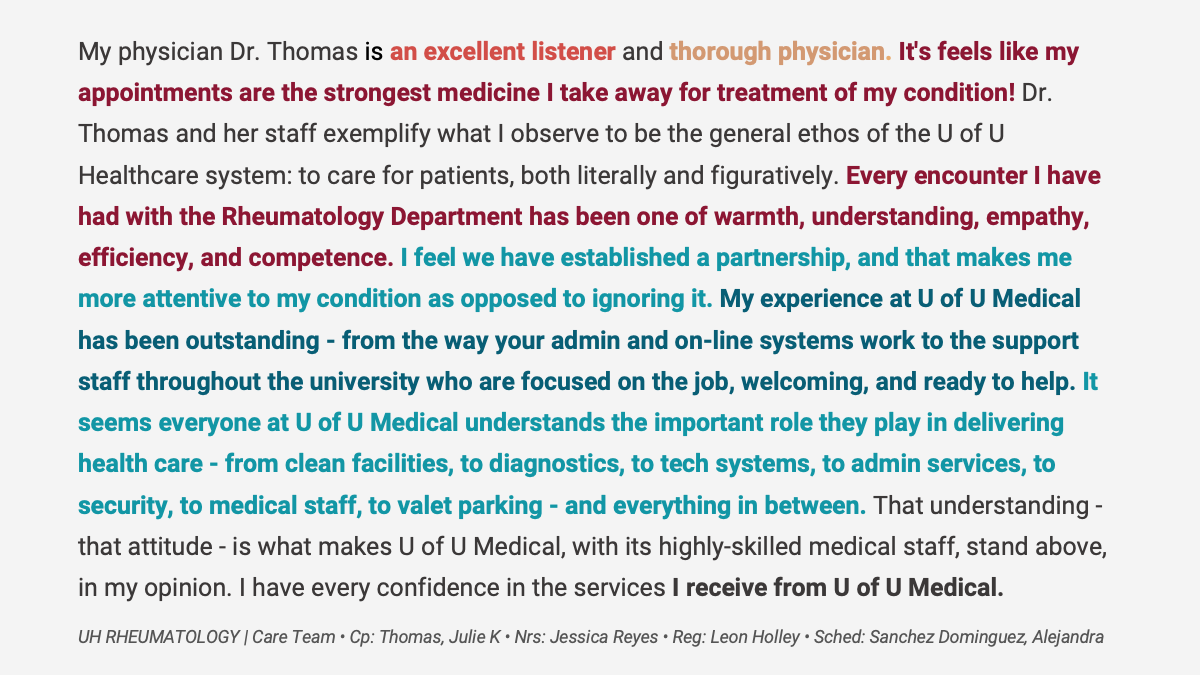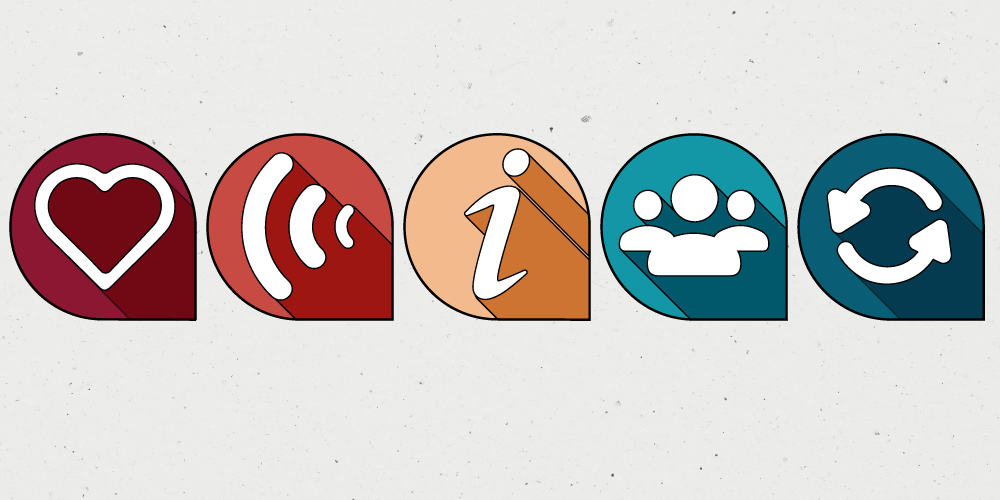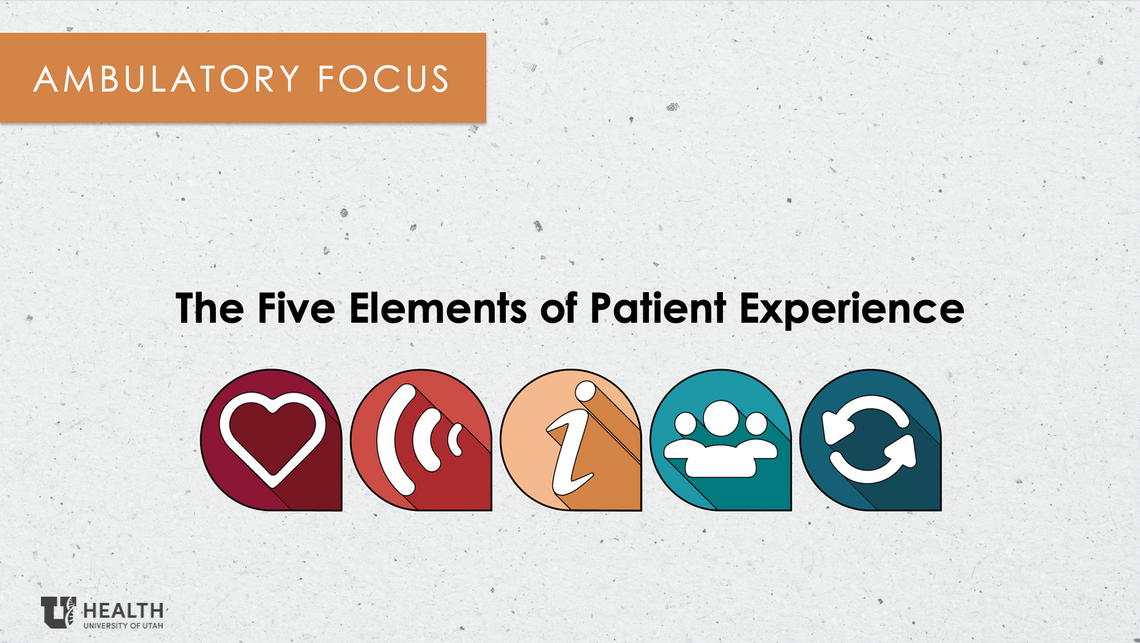What is patient experience?
very week, our organization receives an average of 8,000 patient comments. Most of them describe a range of experiences and journeys: anxiety, pain, and worry, but also respect, comfort, and often—hope.
A patient’s experience begins the moment they choose or are referred to our system. Their experience describes their entire care journey—from scheduling an appointment, seeing a specialist, an inpatient stay, filling their prescriptions, follow-up appointments—to whatever the outcome may be.
Whether building health, a simple cold or a chronic condition, each step in the patients’ entire care experience matters.
What makes an experience exceptional?
In 2008, patient experience at U of U Health wasn’t so great. The system faced frequent patient complaints, including poor communication, long waits to schedule appointments, lack of care coordination, and unprofessionalism. This prompted then-Senior Vice President Dr. A. Lorris Betz to challenge every leader in the system to improve with the statement, “Medical care can only be great if the patient thinks it is.”
“Medical care can only be great if the patient thinks it is.”
Finding the five elements
To improve, we started listening to the voice of our patients—every single one.
In 2010, University of Utah took the lead as the first health system in the country to move from a paper survey to using an electronic survey of patients’ care experiences. Very quickly, we were inundated with incredibly descriptive feedback. Patients began sharing their stories—worries, joys, what happens when we (the health care system) mess up, what’s hard about a particular diagnosis, and what’s amazing about their particular care team, from support staff to physician.
In 2023, we expanded our method of collecting feedback to be more timely and inclusive. Using short, flexible question sets with an aim to reduce burden on the patient and leverage smart triggers from our electronic medical record, we doubled the amount of feedback coming in.
Needles in a haystack
Now, every year we receive approximately 220,000 surveys that generate over 220,000 patient comments. It was (and is) a firehose of information to digest.
To make sense of this massive amount of information, we began engaging partners in artificial intelligence in 2013. We partnered with a natural language processing firm to attempt to break down the complexity into a few, actionable insights. But after a year of analysis, the company could only tell us things we already knew—the proportion of positive or negative comments or the most frequently mentioned topic: wait time. That wasn’t good enough for U of U Health’s physicians, leaders, and staff who had already moved past simply classifying comments. What they wanted was insight—what, specifically, builds trust and loyalty with patients? How do we improve our patients relationship with our providers, teams and system? In other words, what makes a patient experience exceptional?
Five consistent themes
Where we started: The system’s department of patient experience, a team of five individuals, undertook the challenge of answering this question using qualitative analysis. In 2014, the team pulled a sample of 10,000 comments from various care settings—inpatient, outpatient services, primary care, specialty care, emergency care—and analyzed them by service line. Each comment was read, categorized, sent back to service line leadership as feedback, and then brought back to the group for discussion.
Over time, five consistent themes emerged:
The Five Elements of Patient Experience
|
Caring – KNOW me |
|
|
Listening – HEAR me |
|
| Explaining – TEACH me |
|
| Teamwork – COORDINATE for me |
|
|
Efficiency – MAKE IT EASY for me |
|
An exceptional patient experience reflects all five elements.
Patients want to be known, heard, and provided a plan that reflects and includes their values, including sensitivity to their individual background. Patients want the team to coordinate for them and be on the same page with each other. Patients want the team to be organized to meet their specific needs. When all five elements are present, patients describe their confidence and trust in the care team. Patients even describe their loyalty to the health care system.
Here is how the five elements sounds when the patient has confidence in the physician and the team is organized to meet their needs:
Example of a five element comment:

What we learned by using the five elements with teams: Unstructured narrative feedback can be challenging for learning—survey responses tell you what occurred, but they don't tell you why something happened or details on how to improve. We learned that providing a framework to understand feedback and group it into relevant themes was helpful for frontline teams to understand what behaviors to stop/start/continue. It equipped frontline leaders and teams with clear, accessible language to translate patient feedback into domains for improvement and recognition.
How we use the five elements
To understand patient feedback. Answers to questions on patient surveys, or the quantitative data, doesn’t provide much context. It’s the stories that shed light on why a patient needed more explanation or how asking about a patient’s family makes them feel like a person, not a diagnosis.
Identify specific behaviors to care teams to start, stop, and continue. Delivering an exceptional experience often means becoming more consistent with specific behaviors. We use the five elements to help teams understand the high-impact behaviors that create a more meaningful connection with patients.
Widen the perspective from one method of improvement. Typically, teams have focused on one area of improvement, such as efficiencies around wait time. Managing wait time is important, but its equally important to demonstrate consistent behaviors in the other four areas. The five elements helps broaden improvement opportunities beyond one path of improvement.
To onboard new team members. There are many abbreviations and mnemonics in health care designed to provide short cuts to best practice guidelines. But sometimes those guides can turn into scripting that doesn’t feel authentic. The five elements provides a platform to personalize key behaviors that matter across care environments without an overreliance on scripting. Leaders use the five elements to engage teams, especially new members, to build consistent practice.
Respond during the Covid pandemic. We applied the five elements model to understand feedback during the pandemic and surface high-impact behaviors for care teams across the health care system.
Conclusion
Its been 10 years since we developed this framework and much has changed in health care - an international pandemic, growing importance of digital tools, and an imperative to improve health equity. The 5 element framework continues to help us respond by centering the voices of our patients and our communities. We now leverage real-time feedback and machine learning to support reading every single comment that patients share with us. We listen for the five elements and share the patient voice directly with our care teams. We recognize individuals and teams by highlighting patient experiences demonstrating the five elements.
And as a result, University of Utah Health has become a national leader in delivering compassionate, coordinated, and expert care. Over the past 15 years, patient experience has become the cornerstone for initiatives focused on quality and safety, patient-reported outcomes, and cost reduction.
Acknowledgement
Thank you to the contributions of past and present Patient Experience team members: Chrissy Daniels, Corrie Harris, Marcie Hopkins, Kristen Mauck, Brittany Patterson, and Brandon Swensen.
Ember Hunsaker
Mari Ransco
Kathryn Young
Our words can build, or erode, trust with others. Manager of Patient Experience Operations Ember Hunsaker offers insight into how our words may be helping, or harming, those around us and how to balance the scales.
University of Utah Health’s director of patient experience Mari Ransco examines the pandemic patient experience through the lens of the 5 Elements: U of U Health’s qualitative model for delivering an exceptional patient experience.
The patient experience team shares resources to build coordination and teamwork centered on the needs of patients, caregivers, and families.

